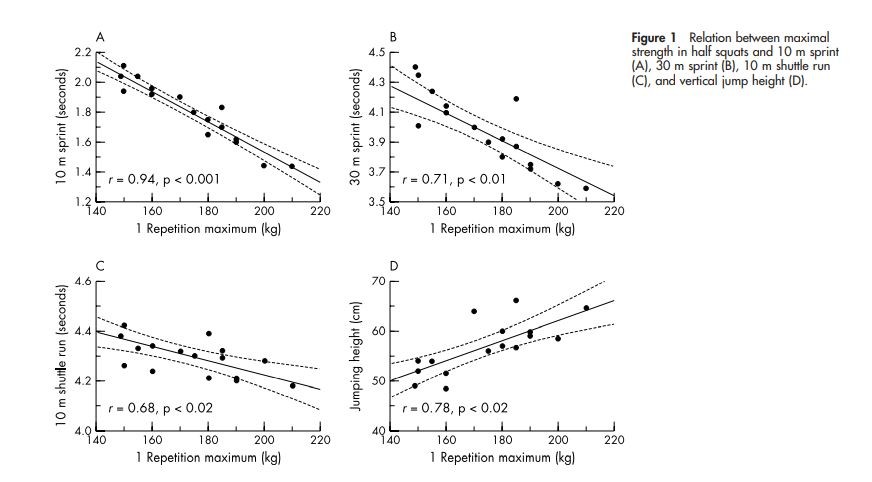The Case for Strength - Sprinting and Vertical Jump
Sprinting and vertical jump performance are important skills in the game of soccer. In terms of sprinting, a soccer player will sprint every 90 s during a match. These sprints average about 2-4 seconds and can account for up to 11% of the distance covered during a match.
And with vertical jump performance think of all the times a player will go up for a header, off a corner or as a keeper exploding up to deflect a ball over the cross bar.
So while intuitively it makes sense that sprinting and jumping are important in soccer it would be beneficial to know how important they are. And from a strength and conditioning perspective, how important is a strength exercise like the back squat, to improving these qualities?
A group of researchers looked to answer these questions and called upon a Norwegian pro soccer club to participate in the study. 17 male soccer players from Rosenborg FC, average age 25 years, were put through a number of performance tests to see how what the relationship was between the 1 RM half squat with sprinting and jumping. Rosenborg FC is a top flight team in Norway having won their league a number of times and participating in the Champions League.
For the 1 RM back half squat players did barbell back squats to 90 degrees of knee flexion, adding load until a 1 RM was determined. Once they were warmed up, most players took three to six sets to determine their 1 RM.
For the sprint test, players ran from 0-30 m with photocell timing gates. Splits were recorded at each 10 m and the players rested 5 minutes between the two attempts. The best sprint time was included in the data presented.
And for the vertical jump a force platform was used to determine vertical displacement. Players jumped three times with a minute of rest between attempts. The best jump score was included in the data presented.
What they found was that there was a strong correlation to 1 RM half squat strength with sprint and vertical jump performance. In other words, the strongest players, as determined by lifting the most during the 1 RM half squat, had the fastest sprints and highest vertical jumps. The correlation between 1 RM squat and 10 m sprint was r=.94. The vertical jump correlated strongly with a r=0.78 and the 30 m sprint having an r=0.71.
While it is important for athletes to train and be strong, this study indicates that squat strength is key for sprinting and jumping. As well, it appears that squatting is more important with shorter sprints i.e. 10 m v 30 m, and thus has an impact on acceleration and initial power. With jumping, power and vertical acceleration are particularly relevant for success with this athletic quality.
Reference
Wisloff U, Castagna C, Helgerud J, Jones R, Hoff J. Strong correlation of maximal strength with sprint performance and vertical jump height in elite soccer players. Br J Sports Med. 2004;38:285–288.
When you subscribe to the blog, we will send you an e-mail when there are new updates on the site so you wouldn't miss them.

Comments